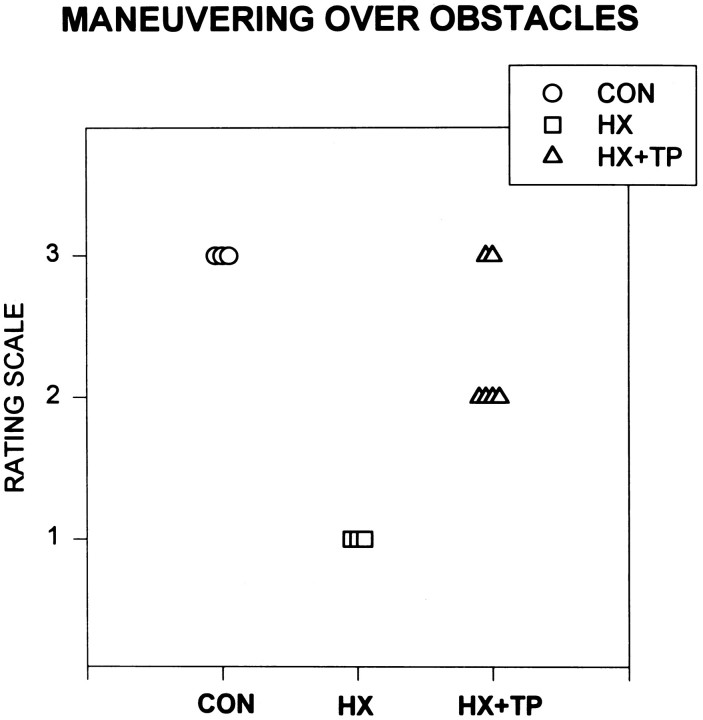Fig. 6.
Effect of neonatal cervical spinal cord injury on the acquisition of precise right forelimb placement during locomotion.CON (n = 3); HX(n = 4); HX+TP(n = 6). Rating scale ranges from 1 to 3: 3 represents mature behavior and 1–2 are degrees of aberrant movements. Each symbol represents an individual animal in the specified group. CON rats step over obstacles in their path during overground locomotion. CON rats anticipate the obstacle and raise their forepaws to completely clear the height of the obstacle during swing-through. HX rats demonstrate significant deficits compared with both CON and HX + TP rats: they fail to anticipate the obstacles and instead drag their forelimbs and place them over the obstacle. In contrast, most HX + TP rats anticipate the obstacle but fail to sufficiently clear it during the swing phase, contacting the distal tip of their paw to the upper edge of the obstacle.

